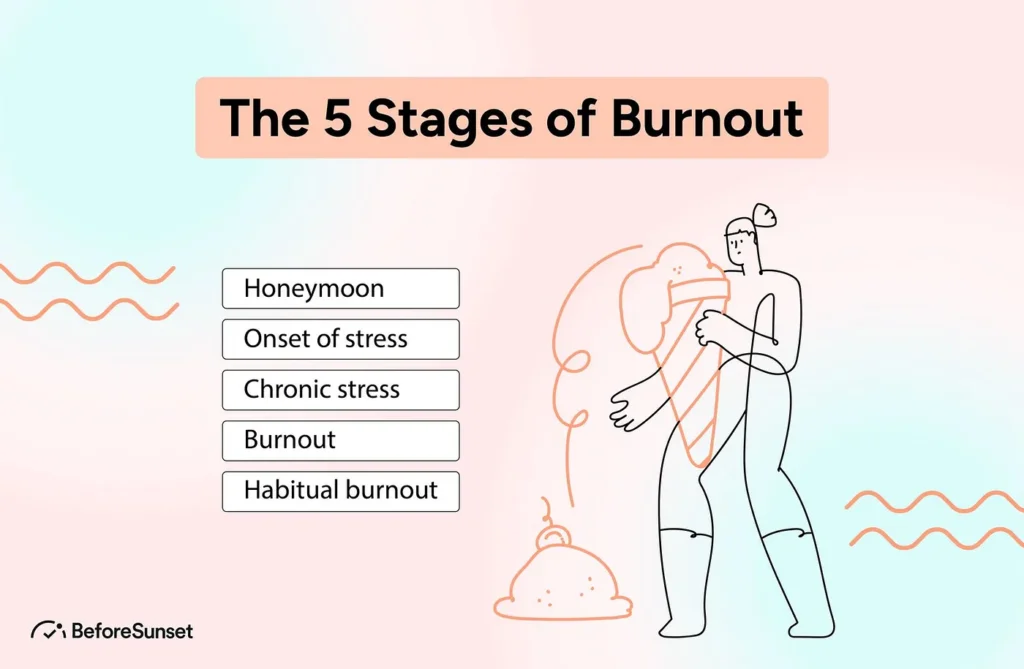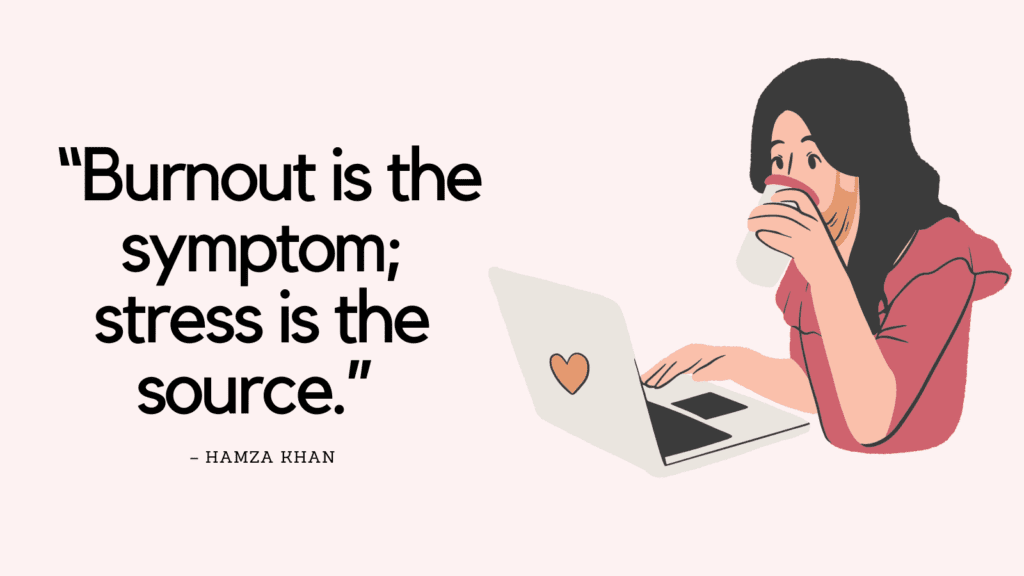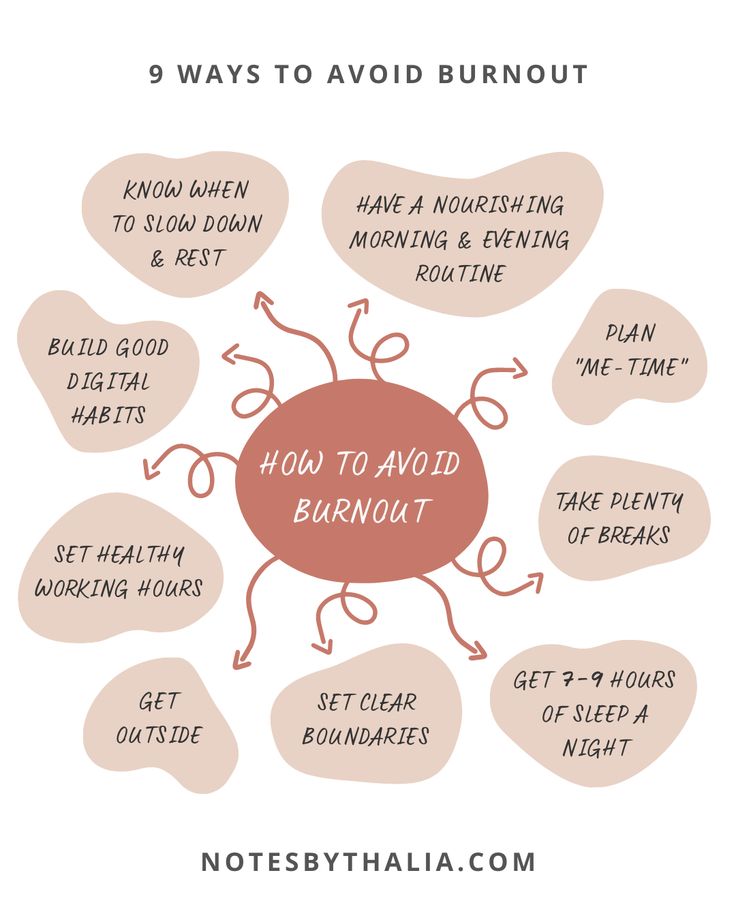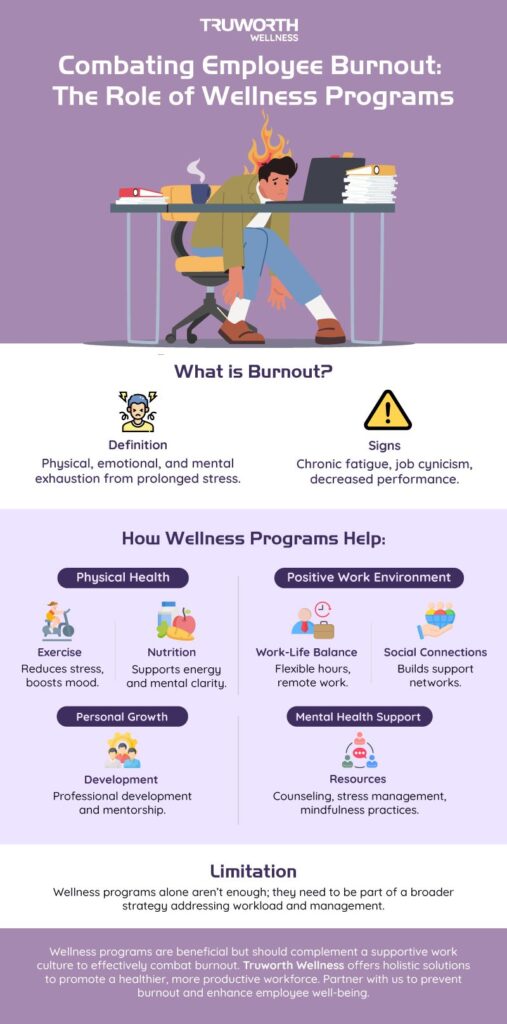Many of us juggle demanding jobs, family responsibilities, and personal commitments with the expectation of excelling at all of them—a perfect storm for exhaustion to take over. According to the World Health Organization, burnout is now classified as an “occupational phenomenon,” highlighting its growing prevalence and serious implications.
But what exactly is burnout? How do you identify it before it disrupts your health and productivity? Most importantly, how can you prevent and overcome it while maintaining high performance?
This guide will unpack everything you need to know about burnout, its underlying causes, warning signs, and effective steps to avoid or recover from it—empowering professionals, HR leaders, and workplace wellness advocates to make well-informed decisions.
What Is Burnout?
Burnout is more than occasional stress or feeling overworked. It’s a state of chronic physical, mental, and emotional exhaustion caused by prolonged and excessive stress. Initially coined by psychologist Herbert Freudenberger in the 1970s, burnout specifically refers to severe stress experienced in high-stakes roles—whether at work, in parenting, or caregiving.

Symptoms of Burnout
Physical Exhaustion: Persistent fatigue, sleep disturbances, and a lack of energy that rest doesn’t improve.
Mental Fatigue: Difficulty concentrating, forgetfulness, and negative thinking patterns.
Cynicism: Detachment from work or people around you, often accompanied by feelings of resentment or negativity.
Inefficacy: Reduced focus, productivity, and a sense of not achieving enough, even when you try hard.
Burnout doesn’t just affect individuals; it spills into workplace dynamics and impacts team morale, leading to decreased engagement and higher turnover rates.
The Root Causes of Burnout
Burnout isn’t just about long hours; it’s about prolonged exposure to stressors. These include professional, personal, and societal factors that compound over time, creating a “perfect storm.”
Key Factors:
- High Job Demands: Tight deadlines, excessive workloads, or ambiguous expectations.
- Lack of Control: Minimal decision-making power or micromanagement that stifles creativity.
- Insufficient Resources: Whether it’s poor equipment, understaffed teams, or lack of training, inadequate support adds pressure.
- Modern Stressors: Financial stress and post-pandemic challenges have made stress more pervasive. According to the American Psychological Association, 79% of employees report work-related stress, with nearly 44% reporting physical fatigue and 36% experiencing mental fatigue.
- Workplace Culture: Lack of recognition, unfair treatment, or ineffective communication fosters frustration and disconnect.
Understanding these causes is key to addressing burnout at its roots instead of merely alleviating symptoms.

Spotting the Early Signs of Burnout
Recognizing burnout early is vital to prevent its escalation. While symptoms may vary in intensity, certain red flags are common across professions and roles.
Physical Signs: Chronic fatigue, headaches, muscle pain, or frequent illnesses due to a weakened immune system.
Emotional and Mental Signs: Heightened irritability, a sense of detachment, and feelings of helplessness or hopelessness. Experiencing difficulty maintaining focus or remembering the specific details of tasks is another common challenge.
Behavioral Signs: Procrastination, decreased motivation, withdrawal from social interactions, or a rise in absenteeism.
How Burnout Manifests Across Roles
- Healthcare Professionals: Emotional fatigue from challenging patient interactions and emotional weight.
- Entrepreneurs: Constant pressure to perform coupled with the fear of failure.
- Caregivers: Overwhelming responsibility and lack of time for self-care can lead to burnout.
Early intervention can make a world of difference, making it crucial to monitor yourself and your team for these telltale behaviors.
How Burnout Affects Productivity and Health
The cost of burnout extends beyond the individual. It negatively impacts physical health, mental well-being, and overall workplace performance.
Health Consequences: Increased risk of anxiety, depression, cardiovascular issues, and sleep disorders. Prolonged stress raises cortisol levels, impairing cognitive functions like memory and decision-making can also occur.
Workplace Impact: Burnout costs companies millions in lost productivity, decreased engagement, and higher rates of absenteeism or employee turnover.
Teams affected by burnout experience poor collaboration, reduced innovation, and misaligned priorities.
Practical Tips for Preventing Burnout
Here are steps you can take to stay ahead of burnout while maintaining high performance.
- Set Clear Boundaries: Separate work from personal time—turn off email notifications after hours and allocate time for hobbies or family. Learn to say “no” to requests that overextend your capacity.
- Take Regular Breaks: Opt for short, frequent breaks during the day to recharge—consider the Pomodoro technique for better time management. Step away from your desk for lunch instead of working through it.
- Prioritize Self-Care: Engage in daily activities that rejuvenate your mind and body, like yoga, reading, or creative hobbies. Maintain a consistent sleep schedule and aim for 7-8 hours per night.
- Seek Support: Build a network of mentors, colleagues, or friends who can provide an outside perspective and moral support. Utilize mental health resources available through your employer or local programs.
- Practice Mindfulness: Meditation apps, gratitude journaling, and breathing exercises can balance your stress levels. Focus on the positives at work and celebrate small wins.
“An ounce of prevention is worth a pound of cure.” These simple yet actionable steps can dramatically reduce your risk of burnout.

The Role of Organizations in Preventing Burnout
Preventing burnout isn’t an individual’s responsibility alone—it requires systemic changes within organizations.

Encourage a Culture of Work-Life Balance
Incentivize employees to take their full PTO and avoid glorifying overwork. Organizations should actively promote a healthy work-life balance by recognizing and rewarding employees who prioritize their well-being. This can be achieved through regular reminders about the importance of time off, encouraging employees to disconnect after work hours, and creating policies that discourage excessive overtime. By fostering an environment where work-life balance is valued, companies can help reduce burnout and enhance overall employee satisfaction and productivity.
Provide Mental Health Resources
Implementing comprehensive employee wellness programs can significantly alleviate the burden of stress and prevent burnout. Companies should offer access to therapy sessions, stress-management workshops, and resources that promote mental well-being. By integrating these initiatives, organizations demonstrate a commitment to their employees’ holistic health, fostering a supportive work environment where individuals feel valued and empowered to manage their stress effectively.
Foster Open Communication
Create team environments where employees feel safe discussing workloads or stress without judgment. Encourage regular check-ins and open dialogue between team members and managers to address potential issues before they escalate. By promoting transparency and understanding, organizations can build trust and support among employees, helping them feel valued and heard. This proactive approach not only alleviates stress but also enhances collaboration and productivity across the board.
Implement Flexible Work Policies
Offering hybrid or remote work options can provide employees with greater autonomy over their schedules and the ability to better manage their personal and professional lives. Flexible work policies allow individuals to work in environments where they feel most productive and comfortable, reducing commute stress and allowing for a better work-life balance. By accommodating diverse working styles and personal circumstances, organizations can enhance employee satisfaction, reduce burnout, and ultimately foster a more dedicated and efficient workforce.
How to Overcome Burnout
If you’re already experiencing burnout, all is not lost. Recovery takes intentional effort but is entirely achievable.
- Acknowledge It: Recognizing you’re burned out is the first step toward recovery. Don’t ignore the symptoms—address them before they worsen.
- Reset Your Work-Life Balance: Take time off to rest and reflect. Use this time to evaluate your priorities and what truly brings you fulfillment.
- Focus on Incremental Changes: Start small by improving sleep routines, cutting back unnecessary work commitments, or scheduling downtime for leisure.
- Seek Professional Help: Therapists or career coaches can pinpoint unhelpful patterns and guide you toward effective solutions.
Burnout recovery isn’t one-size-fits-all, but with the right steps and professional resources, you can regain your energy and purpose.

Prioritize Your Health to Thrive
Burnout doesn’t have to be a permanent state—it’s a wake-up call to reassess and realign. Whether you’re a professional navigating workplace stress, an HR manager implementing wellness programs, or simply someone seeking balance, these insights serve as tools to reclaim your vitality.
Connect with your community, invest in self-care, and advocate for systemic workplace solutions to create a more supportive environment for yourself and others. Remember, your well-being is your greatest asset.
At Leadership Circle, we understand the profound impact burnout can have on both individuals and organizations. Our mission is to empower leaders with the tools and insights needed to foster a healthy, productive work environment. By prioritizing mental and physical well-being, we can collectively combat burnout and enhance overall performance.
We invite you to explore our resources and join our community in creating a supportive workplace culture. Share your experiences with burnout and how you’ve managed it in the comments below, and don’t forget to check out our additional strategies and insights on managing burnout by setting up a consultation with one of our organizational development experts.






Your blog is a true hidden gem on the internet. Your thoughtful analysis and engaging writing style set you apart from the crowd. Keep up the excellent work!
Your passion for your subject matter shines through in every post. It’s clear that you genuinely care about sharing knowledge and making a positive impact on your readers. Kudos to you!
Your blog is a treasure trove of valuable insights and thought-provoking commentary. Your dedication to your craft is evident in every word you write. Keep up the fantastic work!
Your blog is a beacon of light in the often murky waters of online content. Your thoughtful analysis and insightful commentary never fail to leave a lasting impression. Keep up the amazing work!
Your blog is a shining example of excellence in content creation. I’m continually impressed by the depth of your knowledge and the clarity of your writing. Thank you for all that you do.
Your writing is not only informative but also incredibly inspiring. You have a knack for sparking curiosity and encouraging critical thinking. Thank you for being such a positive influence!